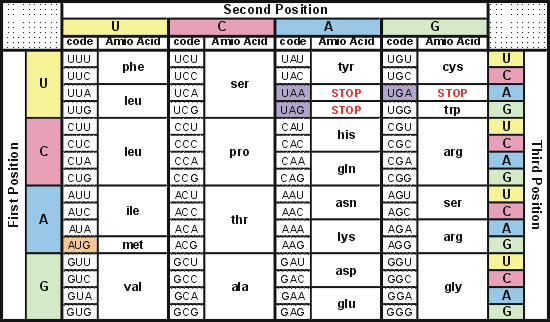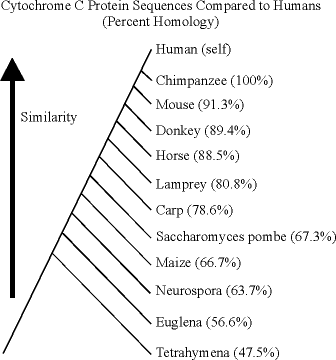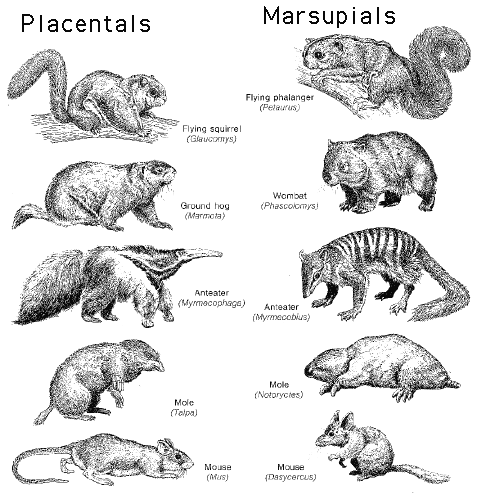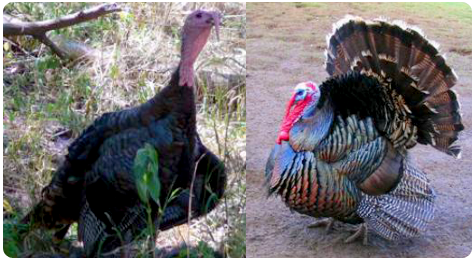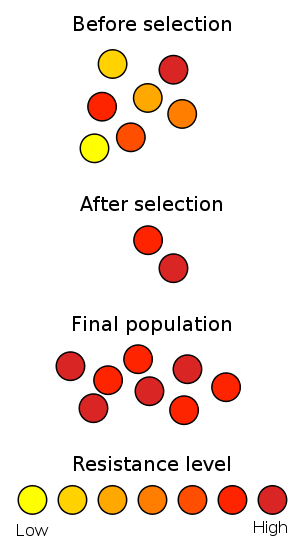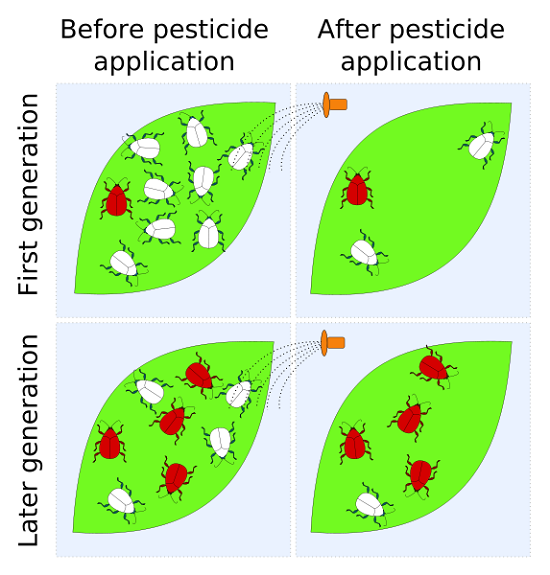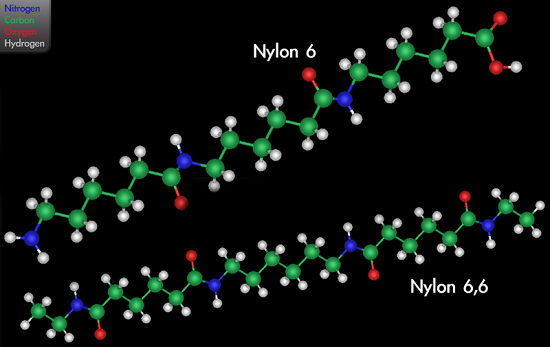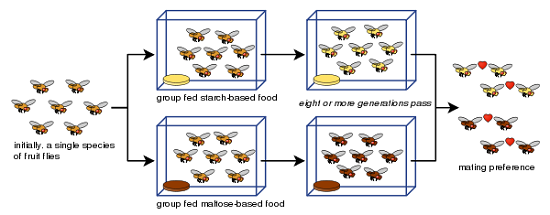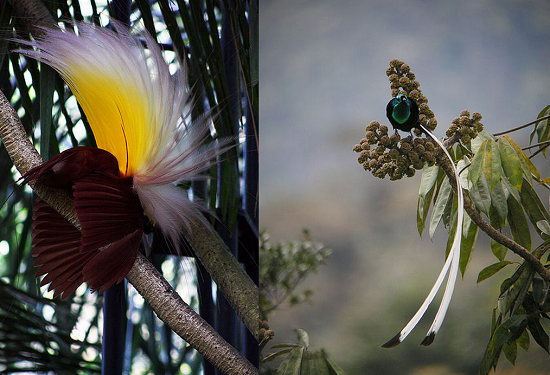Jump To:
Age of the Earth and Its Fossils
Genetics
Comparative Anatomy
Transitional Fossils
Convergent Evolution
Adaptations
Vestigial Traits
Artificial Selection
Evolution in Action
Sexual Selection
And The List Goes On…
- Lithologic Stratigraphy
- Law of Superposition
- Fossilized Footprints
- Fossils
- Fossils of Extinct Species
- The Law of Faunal Succession
- Seashell Fossils on Mountaintops
- Plate Tectonics and Continental Drift
- Same Fossils on Both Sides of the Atlantic
- Radiometric Dating
- Radiocarbon Dating
- Dendrochronology
- Stromatolites
- Heredity
- Universal Genetic Material
- Miller–Urey Experiment
- Mutations
- Speciation
- Natural Selection
- RNA/DNA Codon Table
- Noncoding DNA
- Molecular Clock of Mutations
- Hox Genes
- Sexual Reproduction
- Mitochondrial DNA
- Genographic Project
- Mitochondrial Eve and Y-chromosomal Adam
- Neanderthal DNA in Humans
- Nested Hierarchies
- Cladistics
- Comparative DNA
- Statistical Probability of Congruent Phylogenetic Trees
- Thompsonian Transformation Grids
- Homology
- Embryonic Recapitulation
- Neoteny in Humans
- Atavisms
- Blood Salinity
- Endosymbiotic Theory
- Endemic Island Species
- Species Not Found on Oceanic Islands
- Dinosaurs to Birds
- Fish to Tetrapods (Life from Sea to Land)
- Synapsid (“mammal-like reptiles”) to Mammals
- Artiodactylans to Whales (Land to Sea)
- Horse Evolution
- Human Evolution
- Placental Mammals and Australian Marsupials
- Ichthyosaurs and Dolphins
- Birds and Bats
- The Eye
- Succulents in the Americas and Africa
- Homo floresiensis and Dwarf Elephants
- Coevolution
- Beaks
- Insect Mouthparts
- Tall Trees
- Human Skin Color
- Sickle-Cell Disease
- Lactase Persistence
- The shape of the penis.
- Hip bones in Whales
- Laryngeal Nerve in Giraffes
- Veriform Appendix
- Coccyx
- Goose Bumps
- Maxillary Sinuses
- Blind Spot in Vertebrate Eyes
- Blind Cave Fish
- Flightless Birds
- Tyrannosaurus rex’s Arms
- Wisdom Teeth
- Plica Semilunaris of Conjunctiva
- Palmar Grasp Reflex – Infant grasping reflex
- Ear Muscles
- Antarctic icefish
- The Panda’s Thumb
- Route of the vas derens
- Wild Silver Foxes into Puppies
- Dog Breeding
- Corn
- Chickens
- Domesticated Turkey
- Brussel Sprouts, Kale, Cauliflower, Turnips, Rutabega, Kohlrabi
- Prions
- Peppered Moth
- Antibiotic Resistance
- Pesticide Resistance
- Nylon-Eating Bacteria
- E. coli Long-Term Evolution Experiment
- Speciation of Fruit Flies
- Ring Species
- Cancer
- John Endler’s Guppies
- The Peacocks Tail
- Babirusa Tusks
- Bowerbird
- Irish Elk Antlers
- Bird-of-Paradise
- Duck Penis
- Waist-to-Hip Ratio in Human Females
These reasons will work from the general to the specific. I’ve used links to articles in Wikipedia as much as possible because Wiki articles are refined over time with our understanding of the subjectmatter and are less subject to link-rot. This post is licensed Creative Commons and all photos listed here are available under some form of free-to-use licensing. Please feel free to refine this list and repost it, just please preserve the photo credits and links to photographers. Also, suggestions for improvement on any items is welcome as this is a lot of material over a wide range of scientific fields, so I have certainly bungled some things here.
Over time, new evidence will certainly find some of these examples in error, and that’s a good thing because science is about refining our understanding of the truth. The Theory of Evolution is strong enough that nearly half these examples could be disproved and the evidence would still be fairly overwhelming. There is so much in this world that only makes sense in the light of Evolutionary Theory.
Age of the Earth and Its Fossils
We live on a very old Earth.
The Earth’s crust has layers. Some of these layers are from the decomposition of sediment, others come from chemical precipitation, others from decaying organic matter, and others from volcanic lava. The reason we can see the layers is because they were formed in different ways.
Layers are laid down on top of each other, with the bottom layers laid down first and the top layers laid down last; therefore, the layers on the bottom are the oldest and the ones on the top are the youngest.
Dinosaur footprints, slug footprints, Australopithecus footprints and other footprints on top of any layer in the strata means that layer was at the top of the stack long enough for something to walk on top of it before it got covered by subsequent layers and hardened into solid rock.
The process of permineralization, where mineral deposits form internal casts of organisms, provides us with a vast quantity of fossils that give us an idea of the different forms life has taken in the past.
We have lots and lots and lots of fossils of species that don’t exist anymore. Lots and lots and lots of them in just the superorder Dinsosauria alone.
You will never find a Neanderthal bone in the same stratum as a Tyrannosaurus rex bone. Tyronnosaurus rexes weren’t alive at the same time; therefore, their stratum didn’t get laid down at the same time.
Benjamin Franklin saw that there were fossilized sea shells on top of the mountains of Appalachia, some of them imprinted into solid rock, and concluded, “Tis certainly the Wreck of a World we live on!” The shells were deposited in layers on the Ocean floor over millions of years, layers that would be violently broken up and rippled into a mountain range 480,000,000 years ago by a catastrophic earthquake.
South America fits into Africa, rocks get younger the closer you get to where the crust is spreading under the ocean, and satellites have observed the drift. The continents drift at a rate of a few centimeters a year and the distance between the Americas and Africa is 455,000,00 centimeters.
There are matching fossils on both sides of where the continents appear to have split apart. Cynognathus, a Triassic land reptile, fossils are found in South America and Africa. The Triassic era was between 250,000,000 and 200,000,000 years ago.
Take a quantity of uranium-238 and in 4.5 billion years half of it will have turned into lead-206. When molten rock hardens into a solid, the uranium-238 within it begins to decay. By comparing the ratio of uranium-238 to lead-206, we can estimate how old the rock is. The same thing can be done with Samarium-neodymium, Potassium-argon, Rubidium-strontium, and Uranium-thorium transitions.

1. Formation of Carbon-14
2. Decay of Carbon-14
3. The “equal” equation is for living organisms, and the unequal one is for non-living ones, in which the C-14 then decays (hence the 2).
Carbon-14 has a half-life of 5,730 years. There is a semi-constant ratio of carbon-14 in the air and ocean as it is constantly being created by cosmic rays. Plants take in carbon from the atmosphere and ocean and fix it into themselves. Animals eat plants and fix the carbon into themselves. By measuring the ratio of carbon-14 in a younger fossil, scientists can estimate its age.
Many trees grow a new ring in their trunk every year, meaning the tree is as many years old as it has rings, meaning trees can be used to calibrate Radiocarbon dating to confirm its accuracy.
These fossilized bacterial colonies date back 2.7 billion years and may extend 3.4 billion years. Stromatolites grow at a maximum rate of 5cm every 100 years and a stromatolite 1.5 meters in diameter was found in Virginia and a 500cm high stromatolite was found at the foot of Wutai Mountain in China.
Genetics
How genes and mutations work give us insights and tools into how evolution works.

Table showing how genes exchange according to segregation or independent assortment during meiosis and how this translates into the Mendel’s Laws.
Offspring inherit the characteristics of their parents, which are controlled by genes.
All life on Earth uses a three-letter code to produce 20 standard amino acids. Researchers have artificially expanded the genetic code to produce additional amino acids as tools, but all natural life use the same 20 amino acids from our common descent.
In 1952 Stanley Miller and Harold Urey synthesized organic compounds from inorganic precursors found in the Earth’s original atmosphere, producing more than 20 different amino acids using electrical sparks to simulate lightning.
The genomic sequence in cells is under constant mutation pressure from radiation, viruses, chemicals, and copying errors.
Speciation is the process by which new species are formed. When a species gets split into two groups by a river, mountain range, island, lake, or ocean via earthquakes, floods, droughts, climate change, or continental drift, the two populations will begin to drift genetically.
Mutations that reduce an organism’s ability to survive and reproduce will be less likely to end up in offspring. Mutations that give an organism a survival and reproductive advantage will be more likely to show up in offspring.
Genes that code for proteins are composed of three-nucleotides (U/T, A, G, or C). All the different ways these nucleotides can combine to produce the various amino acids is listed in the above table. Note that the third nucleotide usually makes no difference on the amino acid produced, meaning it can change (mutate) without having any effect on the gene’s expression.
A large portion of eukaryotic organisms’ total DNA does not produce amino acids. In humans, more than 98% of the genome is noncoding. Much of this DNA is vestigial–it expressed in our ancestors but not longer serves a purpose. DNA that does not serve a purpose can mutate without having any affect on the organism.
The number of genetic differences between two species will increase with the time since they originally diverged. Mammals and birds will be equally divergent from fish, and vertebrates will be equally divergent from yeast.
These genes provide for the basic blueprint of all segmented life, such as arthropods, insects, and organisms with backbones. They define what, if anything, should grow out of each segment of the body plan. Mutations in hox genes can replace antennae with legs, as in the above photo of a fly, or give humans a sixth finger, but they also make it much easier for species to mutate in useful ways to produce body plans adapted to a wide variety of environments.
While asexual reproduction is more efficient in nature because it prevents an organism from having to find a mate to reproduce, it also condemns a species to only produce clones of itself. Sexual reproduction improves a species ability to survive by constantly varying the traits of offspring, making it more likely that some will be able to survive a dramatic environmental change such as drought or famine.
While sexual reproduction mixes up the genes from generation to generation, the mitochondria, energy-factories of the cell, have their own DNA and get passed down directly from the mother to her offspring.
This DNA survey of human beings has traced our migration out of Africa into Europe and Asia and then over to North America and finally South America.
Because mitochondrial DNA are transferred from the mother to her offspring unchanged, scientists can use the variation in mitochondrial DNA across modern humans to estimate a rate of mutations (one every 3,500 years) and estimate a time back to a common ancestor who lived around 200,000 years ago.
Because Y-chromosomes are transferred from father to son unchanged, we can trace our ancestry using this DNA sequence. Using a survey of Y-chromosomes from all over the world and a reconstruction of ancestral Y-chromosome DNA from reversing mutated DNA segments, we can estimate a common ancestor to us all between 60,000 and 142,000 years ago.
Non-African humans have between 1% and 4% Neanderthal DNA from when our ancestors interbred with the extinct species.
Comparative Anatomy
Comparing species traits, their DNA, and their geography are tools for outlining their evolutionary progression and relatedness.
We don’t just have a list of species, we have a tree logically laid out according to the similarities and dissimilarities among all the different species on Earth now and fossilized in the past.
Cladistics is a methodology for classifying species into groups based on their characteristics. While some characteristics like eyes and sexual reproduction have emerged more than once in the history of life on Earth, for the most part we may assume that a organisms sharing a trait such as a jaw, central nervous system, lungs, or mammary glands share a common ancestor.
Phylogenic trees are built from comparing genomes in addition to comparing anatomical structures.
When comparing the phylogenetic tree to the molecular tree, they match so well that the significance is P <= 0.00077.
D’Arcy Thompson in his book On Growth and Form saw that one species could be turned into another through the application of mathematical transformations to alter their proportions.
The bat’s wing, seal’s flipper, cat’s paw, and human hand all have the same bones and muscles because they all share a common ancestor. For example, giraffes have the same number of neck vertebrae as humans, seven.
While the specific hypothesis of Recapitulation, that embryos retrace the evolutionary steps of their ancestors in their growth, has been discredited. Embryos do temporarily take on the characteristics of their ancestral species, such as human embryos having gill arches, a tail, eyes on the sides of the head, a tube-shaped heart, and ear-bones in the jaw during development, all of which vanish in later development. Just as Hox Genes make is possible for species to easily change forms and configurations, the stages of fetal development can change to produce very different characteristics in an organism.
Chimpanzee infants more closely resemble humans, suggesting an easy route from our ancestors to us would be to simply stop the development of many features earlier, leaving our heads larger in proportion to our bodies and our faces flatter.
While a species may no longer express the traits of its ancestors, the DNA for those traits may still exist in the organism’s genome and occasionally come out in individuals. As a result, we see hind legs on whales and snakes, hind fins on dolphins, extra toes on horses, teeth in chickens, humans with extra nipples or a tail, and many other traits.
Terrestrial vertebrates “have body fluids roughly the same osmotic concentration as fresh-water fish, roughly 1/3 the concentration of sea water.”
There is strong evidence that Mitochondria and plastids were once bacteria that evolved on their own before being ingested by our cells into a symbiotic relationship. These organelles resemble bacteria that exist in nature and carry similar DNA.
Islands comprise 30% of the world’s biodiversity hotspots and some of the most unusual species, as we would expect from habitats where species are left to evolve in unique ways.
Islands that have never been a part of a continent, but formed from volcanoes do not have terrestrial mammals, amphibians, or fresh water fish, as we would expect if the island could only be populated by seeds and birds over the air or small animals carried on rafts of vegetation.
Transitional Fossils
The fossil record shows endless “in between” forms. The word “to” used in these examples does not mean a direct ancestry between two fossils, but rather refers to the evolving characteristics found in them over millions of years of time.
Pedopenna to Anchiornis to Scansoriopteryx to Archaeopteryx to Confuciusornis to Sinosauropteryx to Eoalulavis to Ichthyornis
Osteolepis to Eusthenopteron to Panderichthys to Tiktaalik to Elginerpeton to Ventastega to Acanthostega to Ichthyostega to Hynerpeton to Tulerpeton to Pederpes to Eryops.
Protoclepsydrops to Archaeothyris to Clepsydrops to Dimetrodon to Procynosuchus to Thrinaxodon to Morganucodon to Yanoconodon.
Pakicetus to Ambulocetus to Kutchicetus to Artiocetus to Dorudon to Aetiocetus to Basilosaurus to Eurhinodelphis to Mammalodon.
Hyracotherium to Mesohippus to Parahippus to Merychippus to Pliohippus to Equus.
Apidium to Aegyptopithecus to Proconsul to Pierolapithecus to Ardipithecus to Australopithecus to Homo habilis to Homo erectus to ‘Archaic’ sapiens… and there’s alot more fossils than these.
Convergent Evolution
Different species will evolve similar adaptations to the similar challenges.
Despite evolving in geographic isolation, the marsupials of Australia have evolved many analogous features of placental mammals in the rest of the world.
The ichthyosaurs, a marine reptile from 250 million years ago, and dolphins are both air-breathing and both descended from land animals. They adapted to life in the ocean with a hydrological design that includes fins and a body shape like that of a fish.
Birds and bats both have wings made out of bones that were arms in their ancestors.
Complex image-forming eyes have evolved some 50 to 100 times, with the first eyes appearing in the fossil record 540 million years ago.
Although they evolved on different contents, the succulents of Africa and the Americas adopted very similar traits to survive in arid climates and soil conditions.
The “hobbit” human of Indonesia and Dwarf elephant both adapted to limited food sources on the island of Indonesia by shrinking in size 840,000 years ago.
Adaptations
Many of the same organs in species are adapted to specific tasks both within a species and across them.
Flowers bribe insects and hummingbirds with nectar in exchange for acting as their instruments of sexual reproduction by carrying pollen from plant to plant. Orchids use deception by mimicking the pheromones and appearance of insects to trick them into attempting to mate with the flower. The existence of unknown insect species has been predicted by the discovery of orchid flowers.
Birds exhibit a wide variety of beak shapes that are adapted to their feeding habits.
The primitive mouthparts of grasshoppers have evolved to a wide variety of specialized feeding strategies in other insects.
Trees grow tall in order to get above the competition for access to sunlight. Shorter trees get left in shadow while the tallest trees get to photosynthesize.
Humans rely on sunlight to generate vitamin D. As humans migrated north, they recieved less sunlight; therefore, natural selection favored lighter skin that produced more vitamin D in response to sunlight.
The gene for this disease is prevalent in Sub-Saharan Africa, where malaria is common. Individuals who carry only a single sickle-cell gene are more tolerate of malarial infection.
Most mammals develop an intolerance to lactose, the sugar found in milk, as they grow older, but humans in some regions are able to continue digesting milk, the result of humans consuming the milk of livestock such as cows, goats, and camels (this is also an example of convergent evolution).
The human male penis has a bulbous end that maximizes its ability to displace the semen of rival males from the vagina.
Vestigial Traits
Various species, including humans, have numerous physical traits that are leftovers from our ancestors.
Baleen whales still have hip bones inside them, serving as anchors for muscles, from when their ancestors had legs.
Although the most direct route for this nerve is just a few inches, it may be up to 13 feet long in giraffes as it goes all the way down the neck, loops back, and comes all the way back up again. This nerve takes a similarly crazy route in humans too. The nerve is long because our fish ancestors had no neck, and the nerve looped around a gill arch that would become the dorsal aorta in mammals.
In our ancestors, the appendix is used to digest plant fibers. As humans began cooking our food, we did not need to digest plant cellulose, so this organ shrunk to its current pinky-size. A recent hypothesis suggest the veriform appendix now serves as a reservoir for bacteria to repopulate the large intestine after illness wipes them out.
The tailbone is the final segment of the vertebral column in tailless primates, all that remains from our ancestors’ tails. Today it serves as an attachment point for muscles and something to sit on.
These bumps on our bare skin occur in cold weather or when experiencing fear. In our ancestors they would cause the fur to rise up, increasing insulation against the cold and increasing the appearance of size against threats.
These sinus cavities have their drainage hole in the top. This is because, when our ancestors walked on all fours, the drainage hole was positioned in the front.
The optic nerve that carries information from our eyes to our brain actually comes through the eye, creating a spot where there are no photoreceptor cells on the optic disc to recieve light. As a result, our brains fill in the blank spot using surrounding details and information from the other eye. The optic nerve of octopus eyes stays behind the photoreceptor cells, so they experience no blind spot.
Animals that move to a dark environment will quickly lose evolutionary adaptations that are no longer useful. Cave fish embryos begin to develop eyes, but then stop and skin grows over them.
Similarly to cave fish, the wings of birds that no longer need to fly will grow smaller and the birds will become flightless.
Contrary to popular belief, Tyrannosaurus rex’s arms are not vestigial, but show large areas of muscle attachment. They may have been used in mating or in helping the animal rise from a prone position.
Similar to the appendix, these teeth helped us grind up plant cellulose. As we began cooking our foods, our jaws atrophied, leaving less room for these teeth to come in. As a result, many people have them pulled today.
This fleshy part found in the inner corner of our eyes is what remains of our ancestors’ third eyelid. Today it produces eye-boogers.
From birth until five or six months of age, human infants will instinctually grasp things that brush their palms. This is a vestigial reflex from our primate ancestors who had fur to which infants could cling.
Humans have fairly useless ear muscles from when our ancestors were able to manipulate their ears independent of their head, like in cats.
This fish has clear blood because it contains only 1% hemoglobin, the metalloprotein that carries oxygen in our blood, because it lives in oxygen-rich cold water but still has the genes to make hemoglobin that it got from its ancestors.
Panda’s, which are related to carnivorous bears, have five clawed fingers and a modified wrist bone that sticks out to function like a primitive thumb, which they used to grab bamboo–which they can barely digest because they are descendent of carnivores.
This tube routes sperm from the testicles to the base of the penis in anticipation of ejaculation in humans. Although the direct route is only a few inches, the vas deferens loops up and over the tubes connecting the kidneys to the bladder and back down again because our ancestors testes were on the inside. Human male embryos start out with their testes on the inside, but they descend to the scrotum during development.
Artificial Selection
For thousands of years humans have bred various species to maximize desirable traits.
Dimitri Belyaer, by selecting for non-aggressive behavior and non-fearful behavior, was able to turn wild silver foxes into tail-wagging, friendly animals very similar to domesticated dogs in just 10 generations.
Humans have produced a wide variety of dogs in many shapes and sizes by selecting for traits in just 10,000 years.
Maize is a domesticated descendent of teosinte, a wild grass. Although they appear very different, two genes control the differences between them.
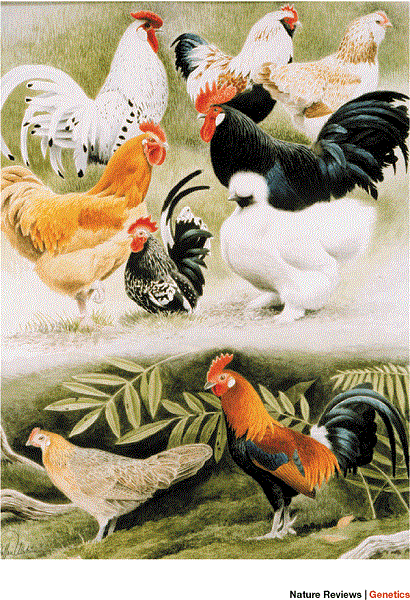
Different breeds of domestic chicken in comparison with the wild ancestor, the Red Jungle Fowl
Credit: Staffan Ullström
Farm chickens are descendants of Red Jungle Fowl.
When you look at the domesticated turkey, it’s hard to believe Benjamin Franklin lamented to his daughter that the turkey should be the American mascot rather than the bald eagle, but the wild turkey is a very athletic and rather majestic animal.
Brussel Sprouts, Kale, Cauliflower, Turnips, Rutabega, Kohlrabi are all descendants of Brassica oleracea, a wild cabbage plant.
Evolution in Action
Natural selection has been observed to happen in the real world, with species evolving right before our eyes.
Prions, an infectious protein, are protein molecules that fold other proteins into their state, causing diseases like Mad Cow disease. These molecules have been found to evolve under selective pressures, such as medical treatments, despite not having DNA.
The most famous example of natural selection, during the Industrial Revolution in England, the lichens on trees died and the bark was stained black with soot. Peppered moths that were light grey and speckled lost their camouflage and black peppered moths were able to hide better, so dark moths became more prevalent whereas grey moths were formerly more prevalent.
The widespread use of antibiotics has put selective pressure on bacteria to evolve resistances to drugs, which they rapidly achieve.
Fruit flies, houseflies, rats, mosquitoes, and Colorado potato beetles are among some of the species observed to evolve a resistance to a variety of pesticides.
In 1975, Japanese scientists discovered bacteria eating the byproducts of nylon 6 manufacture in the wild despite the fact that those substances are thought to not have existed before nylon production in 1935.
For over two decades Richard Lenski has tracked the changes in generations of 12 initially identical populations of asexual Escherichia coli, freezing every 500th generation to track evolutionary changes. The project reached 50,000 generation in 2010 and observed numerous adaptations, most strikingly one strain evolving to consume citric acid–something the species was previously thought incapable of (Experiment website here).
William Rice and G.W. Salt were able to breed a population of fruit flies into two species by selecting them for their food preferences in just 35 generations.
Seagulls around the North Pole, salamanders around California’s Central Valley, and Warblers around the Himalayas are species that can breed with their neighbors all the way around the circle, but cannot breed with species opposite them in the circle, meaning neighbors are the same species, but those at opposite ends of the circle are different species.
One of the reasons cancer is so difficult to treat is because the disease evolves through natural selection to grow more resistant to treatments.
Sexual Selection
Natural selection doesn’t just apply to climate, food, and predators. Members of a species that sexually reproduce must compete with one another for mates.
Endler documented the colors of guppies and the competing forces of predator and sexual selections. Where there were fewer predators, the guppies got more colorful to attract mates.
Peafowls have huge ungainly tail feathers that, while beautiful, seem like more of an encumbrance when dealing with predators; however, peacocks display this plumage to peahens as part of courtship, suggesting the peahen discerns something about the health of the male’s genes in the display.
These canines drive through the skin and curl back towards the forehead, providing a defense for intra-species fighting while the bottom canine-tusks provide an offense.
Male bowerbirds construct elaborate bowers, decorating them with colorful objects, berries, piling twigs, stones, and other displays of which female bowerbirds will evaluate several before choosing a mate. After mating, the female then builds a nest elsewhere to raise the young alone.
Stephen J. Gould argued that these enormous antlers, which required great mineral resources from plants to support and prevented the elk from navigating through forests, were largely responsible for their extinction. The positioning of the antlers were poor for combat between males, but were great for intimidating rivals and impressing females.
These birds have evolved a wide variety of plumage displays for the sole purpose of attracting a mate.

Duck genitalia and mechanical barriers
Credit: Patricia L. R. Brennan1,2,*, Christopher J. Clark1,2 and Richard O. Prum
Ducks copulate through rape. As a result, females have evolved mazelike vaginas, complete with dead-ends to prevent insemination. Male ducks have evolved one of the longest penises in relation to body-size of any vertebrate as well has having a penis that takes on a corkscrew shape to better navigate the female’s vagina.
Waist-hip ratio is a significant measure of female attractiveness in humans, which makes sense as the waist is an indicator of fertility while the hips are an indicator of being able to give birth to human infants with their extremely large heads.
And the List Goes On and On…
Aphids go from asexual to sexual in times of stress. Eating Cicadas can trigger a shellfish allergic reaction. Antifreeze proteins and lots and lots of other examples of convergent evolution. The Phylliidae Convention in Japan. Dr. J. Craig Venter engineering the first self-replicating semi-synthetic bacterial cell. Artificial cell membranes. Yeast evolving into multicelluar yeast in two months in a lab. The Triune brain. Radiotrophic fungi. Urban wildlife. Chromosome 2 in humans. Cytochrome c. Examples of mutations that occur in humans when you change just one amino acid. The extensive list of fossil sites from around the Earth. Boa constrictors have hip bones. Domestic Pigs. Domesticated Cows. Alligators and frogs taste like fishy chicken. Male nipples. Tibetan high-altitude genes and the Milano mutation. The science of memetics. Chalk mountains are made from piles of forminifera shells. The convoluted contortions of flat-fish growth. Cannibals in Papua New Guinea developed resistance to prion protein disease. Tibetans evolved genes for higher red blood oxygen carrying capacity after diverging from the Han Chinese 3,000 years ago. Smallpox and HIV resitance. The Black Death and the CCR5-Delta32 mutation. Beta-thalassemia. Asian alcohol flush syndrome. The Palmaris longus muscle. Blue Eyed people. The Vomeronasal organ. The Plantaris muscle. Darwin’s tubercle. Scientists regressed a bacteria and got it to retrace it’s evolution to its current state.
And there’s more and more being discovered all the time. Without the theory of evolution, this is just a list of trivia. Through evolution, all of these facts fit together into one incredibly beautiful painting of how we came to be here today.
- Talk Origins has a much more erudite list 29+ Evidences for Macroevolution.
- Dr. George Johnson’s Backgrounders has a step by step walkthrough of the evidence in plain English.
- Wikipedia has an extensive page outlining the evidence for common descent.














![DNA Covalently Bonded to the Cancer-Causing Mutagen in Tobacco Smoke, benzo[a]pyrene.](https://ideonexus.com/wp-content/uploads/2012/02/017.png)


